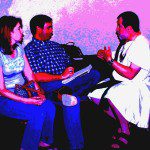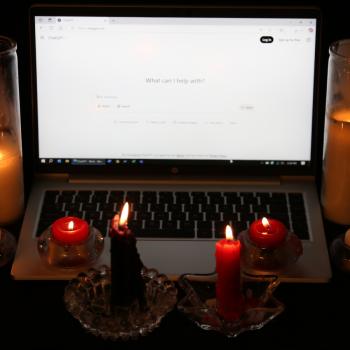A Facebook meme says “I like big books and I cannot lie.” So do I. I like novels that are long enough for a full adventure and I like non-fiction works that are long enough to tell me everything I want to know about a subject.
But there’s a place for shorter books too. They can be read quickly – let’s face it, we don’t always have time to read an epic from the next would-be George R.R. Martin. Short books make good introductions for people who want a brief overview but who aren’t ready for all the details. And some stories just aren’t that long.
Here are three short reviews of three short books. As always, I don’t review books differently based on how I get them, but for those who care about such things, I bought all these myself – none were review copies.
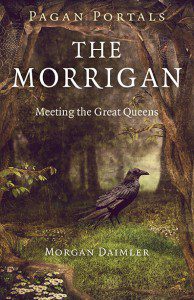 The Morrigan – Meeting the Great Queens
The Morrigan – Meeting the Great Queens
by Morgan Daimler
published by Moon Books, December 2014
e-book: $3.99, trade paperback: $9.95
92 pages
I can’t think of any deity who’s been more active over the past few years than the Morrigan. I’ve had my own experiences of Her, there are multiple groups and many individuals dedicated to Her, and we’re starting to see books written for and about Her.
Author Morgan Daimler says “this book was written as a resource for seekers that will offer both solid academic material and anecdotes of connecting with the Morrigan in a format that is accessible and designed to be easy to read.”
I’d say she succeeded. When people ask me “how do I learn about the Gods?” one of the things I always tell them is “read Their stories.” Most of us are exposed to the Greek Gods in our formal education and in popular culture. It’s pretty easy to find the stories of the Egyptian and Norse deities. It’s not so easy to find the stories of the Celtic Gods. Some of Morrigan’s stories are fairly accessible but most aren’t. And just how many Morrigans are there? Does “the Morrigan” mean one Goddess or three? Or is it a title held by many?
The Morrigan – Meeting the Great Queens presents the literary and etymological evidence we have for the Morrigan. Morgan Daimler gives her interpretations, but she’s very clear where there is disagreement among reputable scholars, and on numerous occasions reminds readers to “draw their own conclusions.”
This isn’t just academics. Each chapter concludes with “The Morrigan in My Life,” where Morgan Daimler gives us an insight into her devotion and practice. There are prayers, poems, stories, and devotional practices, all of which can help a beginner get started in their own practice.
This is not a book that tells you everything you need to know about the Morrigan. Rather, it’s a book that points you toward the sources you need to read for yourself if you feel called to Her… or to Them.
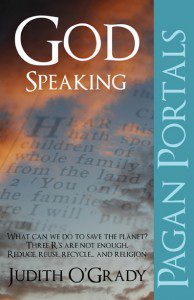 God-Speaking
God-Speaking
by Judith O’Grady
published by Moon Books, May 2013
e-book: $3.99, trade paperback: $9.95
61 pages
I experience the Gods as real, distinct, individual beings with their own personalities, goals, and areas of responsibility. So do many others – that’s why polytheism is growing so rapidly. But our mainstream culture is overwhelmingly monotheistic and with the exception of small groups like Pentecostals, it provides few examples of personal religious experiences.
God-Speaking provides an articulate, easy to understand, first-hand account of what it’s like to experience real Gods. In the first chapter, author Judith O’Grady says:
The historical way of describing my perceptual reality is to call me a visionary, a seer, or a mystic… I think of it as a conversational two-way street; I speak to the Gods and They speak to me (if They choose), a process I call ‘God-Speaking’. Although the process is less like a telephone conversation and more like a series of prickly feelings and insistent near-insights that ends with conviction rather than understanding.
This whole process I call ‘God-Bothered’ because, really, the Gods don’t enter into communication with us to pat us on the back or congratulate us on a job well done but instead to give us difficult tasks and teach us unpleasant truths.
Like The Morrigan – Meeting the Great Queens this is part of Moon Books “Pagan Portals” series of very short books on a wide variety of Pagan topics. Unlike The Morrigan this book doesn’t have a lot of references or recommended practices. Its primary value how it translates the nearly-lost art of visionaries, seers, and mystics into a modern Pagan setting.
God-Speaking is rather short on how to facilitate experiences of the Gods – you can only cover so much in 61 pages. I’m not sure the book on How To Experience A God has been written yet, and in any case, They speak to who They choose – and They rarely choose to speak to people who say “hey, here I am – show me something.”
If you think people who talk to Gods are crazy, read this book. If you feel the call of the Gods but you’re afraid it’s all self-delusion, read this book. If you’ve had an experience of the Gods and you’re trying to put it into a helpful context, read this book.
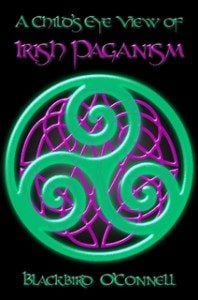 A Child’s Eye View of Irish Paganism
A Child’s Eye View of Irish Paganism
by Blackbird O’Connell
published by Spero Publishing, 2012
e-book: $3.99, trade paperback: $9.95
62 pages
This book is part of Spero Publishing’s A Child’s Eye View series of Pagan books for children. There are books on Wicca, Vodou, Druidism, Heathenry and more, including this one on Irish Paganism. The back cover says it’s written for children 8 to 13 and “for busy adults as well.”
As a book for children – particularly toward the lower end of that age range – it’s perfect. It presents a basic, high-level view of what we know about the ancient Irish, some common terms, and a paragraph or two about a few of the major Gods and heroes. “What You’re Supposed to Do” is a brief description of how to honor the Gods, ancestors, and land spirits. “The Holy Days” covers the four Celtic fire festivals (but not the solstices and equinoxes). And it does so in a polytheistic context without comparing and contrasting to monotheism and our mainstream culture.
I bought this book hoping to find some stories I could tell during UU Sunday services. But the stories in it are very brief and have been rather sanitized – I can use it as an index, but not as a primary source.
If an adult who was curious but not interested in becoming Pagan asked me for an introduction to what I do today, I’d give them this book before I’d give them Scott Cunningham’s The Truth About Witchcraft Today (which is a fine book if you’re a Wiccan, which I’m not).
A Child’s Eye View of Irish Paganism is intended for Pagan children. I’m glad it and books like it exist, and I’ll keep it in mind if I need a gift idea in the future.



